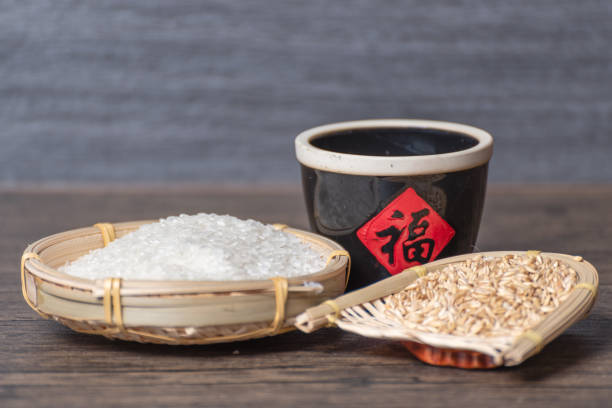Sake and, often referred to as Japanese rice wine, is much more than just an alcoholic beverage. It is a symbol of Japanese culture, an art form that has been refined over centuries, and a testament to Japan’s intricate relationship with its natural resources. Though sake is widely enjoyed globally today, its roots run deep in the traditions and rituals of Japan, making it a fascinating subject of study and appreciation.
The Origins of Sake
The origins of sake date back over a thousand years. The first known production of sake in Japan is believed to have occurred in the Nara period (710-794 AD). However, rice cultivation in Japan started much earlier, around 300 BC, when rice was first introduced from China. This cultivation allowed the Japanese to experiment with rice fermentation, eventually leading to the creation of sake.
The earliest methods of brewing sake were rudimentary. Villagers would chew rice and nuts, and the enzymes in their saliva would begin the fermentation process. This sake was then used in religious ceremonies and was believed to appease the gods. As sake brewing techniques evolved, they became more sophisticated, with the advent of koji mold (Aspergillus oryzae), which is crucial for converting rice starches into fermentable sugars, marking a significant turning point in sake production.
The Art of Sake Brewing
The brewing of sake is an art that combines natural ingredients with human craftsmanship. Unlike other alcoholic beverages, sake production relies heavily on the quality of its ingredients—rice, water, yeast, and koji mold. Each element plays a crucial role in defining the flavor profile and quality of the final product.
1. Rice: Not all rice is suitable for sake production. Sake rice, or “sakamai,” is specially cultivated for brewing. It has larger grains, which allow for easier milling to remove the outer layers and expose the starchy core. This milling process, known as “seimai,” is vital, as the degree to which rice is polished directly impacts the sake’s flavor and style. High-grade sakes like “Daiginjo” and “Ginjo” are made with rice polished to at least 50% or more of its original size, resulting in a delicate, refined flavor.
2. Water: Water is another critical component in sake brewing. Japan’s geography provides access to some of the purest water sources, which significantly contributes to sake’s quality. Soft water typically yields a smooth, mild sake, while hard water can produce a fuller, richer flavor. The mineral content of water, particularly potassium, magnesium, and phosphoric acid, also influences fermentation and the growth of yeast and koji mold.
3. Koji Mold: Koji mold is a type of fungus used to saccharify the rice, breaking down its starches into fermentable sugars. This step is unique to sake brewing, distinguishing it from other fermentation processes like beer or wine. The mold is cultivated on steamed rice, creating “koji rice,” which becomes a source of enzymes that convert the rice starches during fermentation. The koji’s quality, alongside the brewer’s expertise in cultivating it, is crucial in determining the sake’s flavor profile.
4. Yeast: Yeast is responsible for fermenting sugars into alcohol. Different strains of yeast are used depending on the desired aroma and flavor profile of the sake. Some strains produce floral and fruity notes, while others might emphasize earthy or umami characteristics. Selecting the right yeast is vital for achieving the brewer’s vision for the sake.
The Types and Styles of Sake
Sake comes in various types and styles, categorized by factors like rice polishing ratio, brewing method, and flavor profile. Understanding these categories helps in appreciating the diversity of sake.
1. Junmai: Junmai sake is pure rice sake, made without any added alcohol. It tends to have a fuller body and a higher acidity, which pairs well with a variety of foods. Junmai sake is known for its robust flavors and is often enjoyed warm or at room temperature.
2. Ginjo and Daiginjo: These are premium sakes that require a rice polishing ratio of 60% or less for Ginjo and 50% or less for Daiginjo. They are often brewed at lower temperatures, resulting in a lighter, more aromatic sake with fruity and floral notes. These sakes are best served chilled to preserve their delicate aromas and flavors.
3. Honjozo: Honjozo sake has a small amount of distilled alcohol added to it, which helps to extract flavors and aromas from the rice. This addition lightens the flavor and makes it a versatile pairing for many dishes. Honjozo can be enjoyed both chilled and warmed, depending on the season and preference.
4. Nigori: Nigori sake is unfiltered or coarsely filtered, leaving rice particles suspended in the liquid, giving it a cloudy appearance. It is sweet and creamy, often served chilled, and pairs well with spicy or sweet dishes.
Sake and Japanese Culture

Sake holds a significant place in Japanese culture and tradition. It is not just a drink but a cultural artifact interwoven with Japan’s religious and social fabric. Sake is often used in Shinto rituals and ceremonies, where it is offered to deities as a token of respect and purification. One such ritual is “Kagami Biraki,” the ceremonial breaking open of a sake barrel at weddings, festivals, and other celebrations, symbolizing harmony and good fortune.
In everyday Japanese life, sake is often shared among friends and family as a gesture of camaraderie and bonding. The custom of serving sake to one another from a shared tokkuri (sake bottle) into ochoko (small cups) reinforces the values of hospitality and reciprocity. It’s a drink that brings people together, bridging gaps and fostering relationships.
The Global Rise of Sake
In recent years, sake has gained international acclaim, transcending its status as a traditional Japanese drink to become a global sensation. This rise can be attributed to several factors: the increasing interest in Japanese cuisine worldwide, the globalization of cultural products, and a renewed appreciation for artisanal and craft beverages.
Chefs and sommeliers outside of Japan have begun to recognize the versatility of sake, not just as a beverage to pair with Japanese cuisine but as a complement to a wide range of dishes, from cheese to desserts. Sake’s unique flavor profiles, which range from sweet to dry and light to rich, offer a dynamic pairing potential that has yet to be fully explored in many culinary circles.
Conclusion
Sake is more than just a beverage; it is an embodiment of Japanese culture, tradition, and craftsmanship. The process of making sake is meticulous and steeped in history, requiring a deep understanding of its ingredients and their interactions. As sake continues to gain popularity globally, it remains a powerful symbol of Japan’s rich cultural heritage. Whether enjoyed warm or cold, in a small rural izakaya or a Michelin-starred restaurant, sake invites drinkers to partake in an ancient tradition, one sip at a time.





